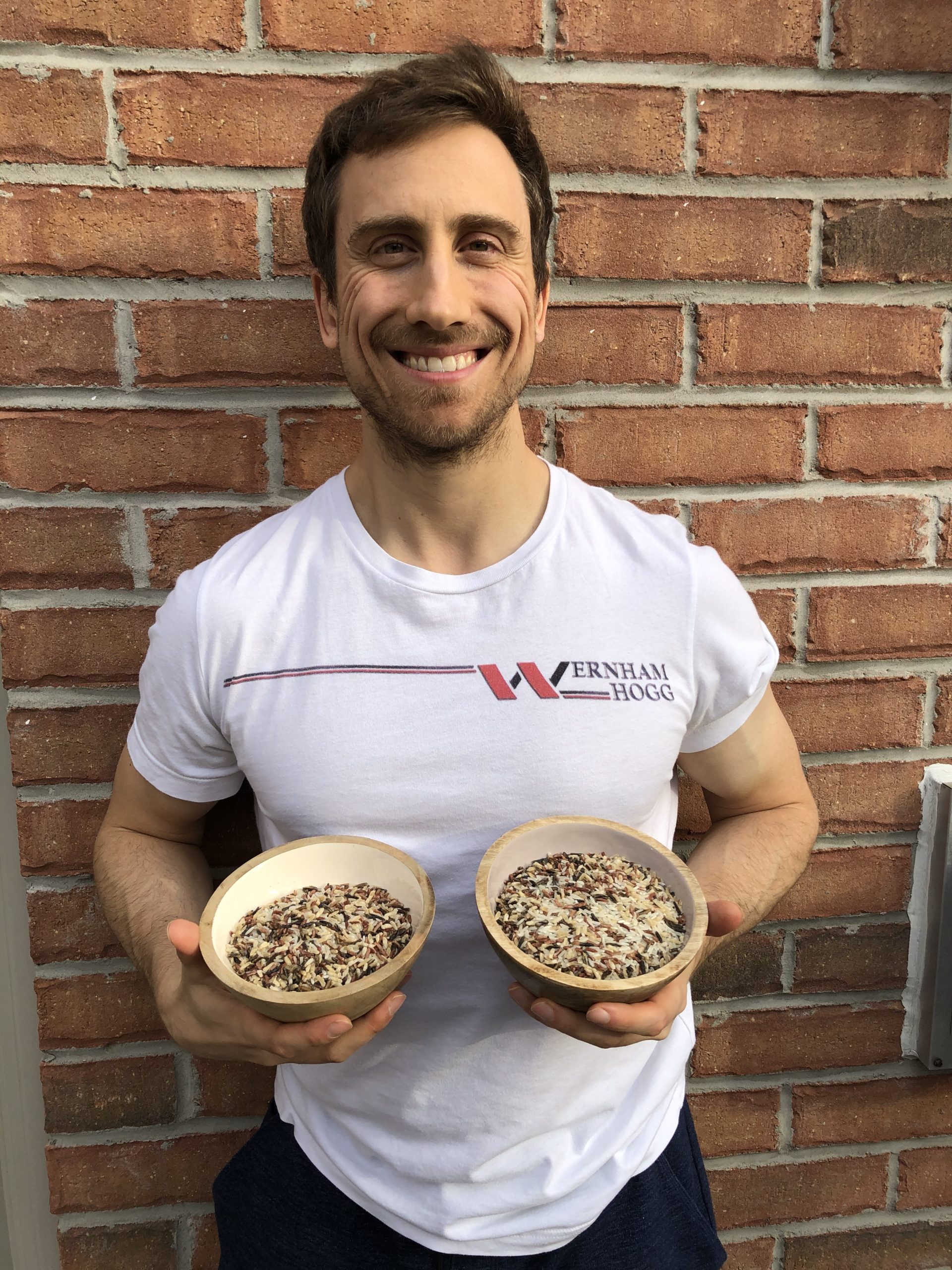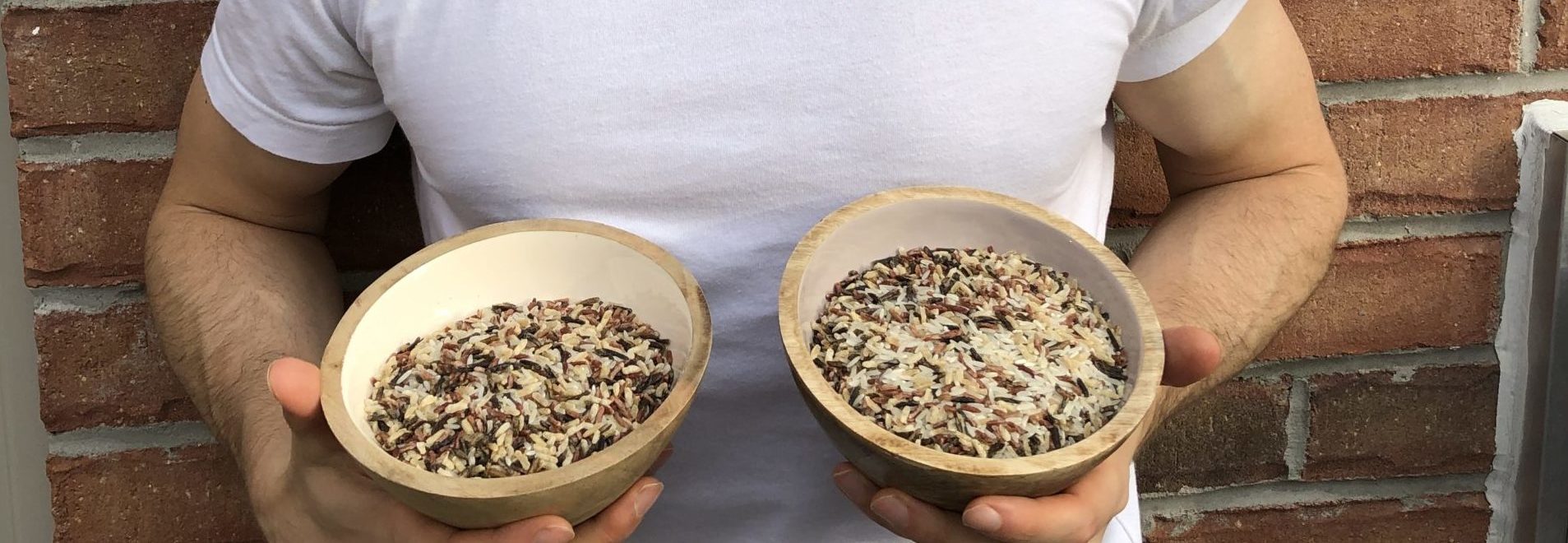Got rice? Most of the globe certainly does.
Rice sits among the top 3 mostly widely produced and consumed grains rice in the world alongside familiar favourites wheat and corn.
It’s certainly one of the top 3 most widely consumed grains in my household as well.
Known not only for its nutritional value and ease of preparation, rice also brings exceptional versatility affordability, and deliciousness to the table.
And just in case you haven’t caught on yet, I’m here today to talk all things rice!
In today’s post, brought to you in collaboration with the USA Rice Federation’s Think Rice Campaign, we are going to take a deep dive into the world of U.S.-grown rice.
To my fellow Canadians, did you know that the majority of the rice we eat here in Canada is U.S-grown?
In fact, the rice you see me pictured with in today’s blog cover photo was purchased here in Toronto but actually grown in Texas!
Pretty cool right?
Texas actually happens to be in the top five rice producing states in the U.S.
The other four are Arkansas, California, Louisiana and Missouri.
If you’re a big rice eater like I am, you probably appreciate understanding a bit more about where your rice is coming from.
The Nutritional Benefits of Rice Intake
As a dietitian, there is a lot to love about rice beyond just the taste and energy it provides.
U.S.-grown rice also brings some very important micronutrients to the table.
The two that specifically stand out to me are potassium and magnesium.
From a population perspective, the data suggests that many Canadians may struggle to get enough of these nutrients in their diet.
Although they are unique nutrients in their own right, what ties potassium and magnesium together is that they both help control your blood pressure levels.
With 1 in 4 Canadians suffering from high blood pressure, it’s comforting to know that a family favourite like rice, which is also naturally low in sodium, can play such an important role in keeping you healthy.
More Fast Facts About Rice
- Rice Is Affordable: A single serving of rice (½ cup) only costs about 10 cents from grocer to plate.
- Rice Has an Incredible Shelf-Life: Unopened brown rice will last 6 months in the pantry, while milled rice has a nearly indefinite shelf-life.
- Rice Is Easy to Store After Cooking: Cooled and sealed cooked rice can be refrigerated for 3 to 5 days, or frozen for up to six months.
Fun Fact: Reheating Your Rice Right
I have so many clients that make the most of the convenience rice offers by cooking it in bulk and enjoying it throughout the week.
In order to optimize flavour and texture, the best way to reheat rice involves using 2 tbsp of liquid (30ml) per cup (250ml) of cooked rice.
You might use water, broth or stock to do the job!
If using your stovetop or oven, you will need about 5 minutes whereas the microwave takes about 1 minute per cup (or until heated through).
The Think Rice Campaign – 5 Creative New Ways to Use Rice
I want to finish off today’s article by bringing the Think Rice campaign to life.
The campaign challenges us to use rice in 5 different ways for 5 different days, and I’m going to provide a wide variety of examples to help bring to life just how versatile U.S.-grown rice really is.
All recipes below are hyperlinked so you can try them out next time and demonstrate rice being used in a wide variety of ways including dinner, lunch and dessert!
Want to Use Rice at Breakfast? Try these Gluten-Free Rice Pancakes
Want to Use Rice in a Dessert? Try some Brown Rice Espresso Brownies
Want to Use Rice for Italian? Try these delicious Rice & Beef Meatballs
Want to Use Rice for A Vegetarian? Try this Rice & Lentil Skillet dish
Want to Use Rice to Get Creative? Try this unique Avocado & Brown Rice Florentine
Easy to cook, easy to store, and literally always at your finger tips – when rice is in the pantry, just about anything is possible!
For more information and recipes check out: www.riceinfo.com.
Until next time,
Andy De Santis RD MPH




